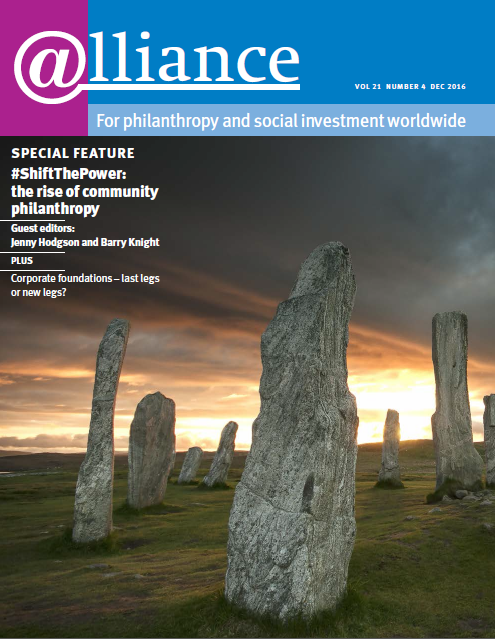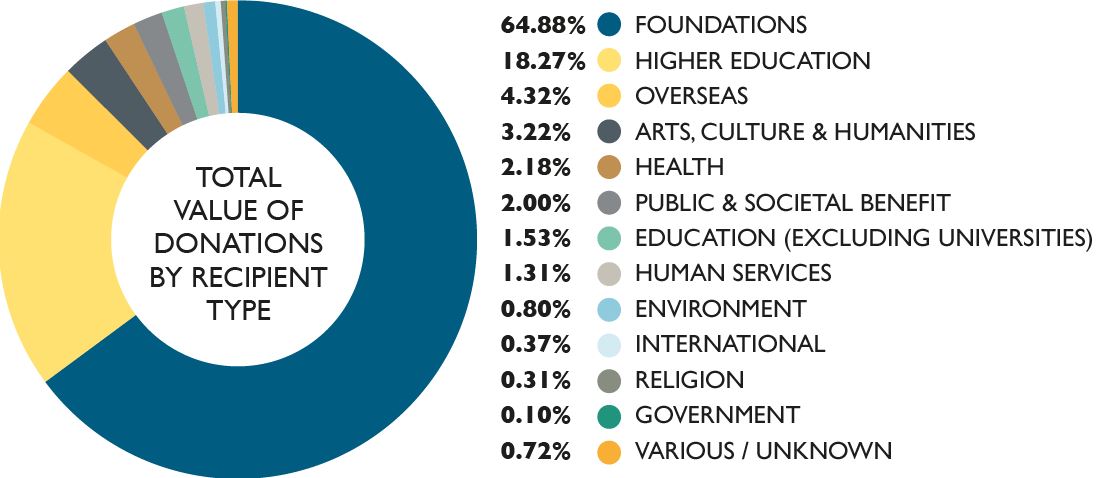2,197 gifts of $1m or more, worth a combined $56bn, were made across the UK, the US and the Middle East (GCC[1]) in 2015, according to the findings of the latest Coutts Million Dollar Donors Report.
The figures represent a significant increase from 2014 in both the number and total value of million-dollar donations, marking a return to levels of giving not seen since the financial crisis of 2008.
While a single gift of $32bn from the Middle East accounted for over half the total value, the increase was also driven by a remarkable rise in the number of donations across other regions. In the US the number of gifts grew by an incredible 71% from the previous year, while the UK saw a rise of 19%.
Across all three regions the majority of million-dollar giving continued to come from foundations and individuals, who accounted for 44% and 42% of the total number of donations respectively, with corporations (including corporate foundations) providing the remaining 14%.
The report highlights the growing pool of donors giving at this level. In the UK, for example, 35 of the 166 million-pound donors had not previously appeared in the report, adding to the 33 ‘first timers’ identified in 2014. Perhaps most encouragingly, seven of those first time donors from 2014 gave again at this level in 2015.
The large gift from the Middle East meant that foundations topped the list of recipients for the first time in the report’s history. Fundamentally, however, higher education retained its position as the most popular cause for major philanthropists (accounting for almost half the value of donations in the US and over a third of the total value in the UK).
Higher education’s dominance of philanthropy at this level is perhaps unsurprising. Universities are clearly large, enduring institutions that have both the capacity to utilise $1m+ sums and a track record of impact that appeals to ambitious donors, while the variety of activities on campus – from cutting-edge scholarship to arts, sports and student welfare – creates opportunities to accommodate the passions and interests of almost every donor.
However, while universities continue to receive the lion’s share of these gifts, the report also indicates that the range of recipients is on the up. The number of organizations receiving $1m+ gifts increased by 64% in the US and 10% in the UK, with causes including arts and culture enjoying a significant uplift in donations compared to 2014.
The Coutts report, which tracks and analyses donations of $1m+ (£1m+ in the UK) across a selection of regions each year, also includes case-study interviews with philanthropists including Lloyd Dorfman CBE and organizations such as Omidyar Network and the Abdulla Al Ghurair Foundation for Education.
For the first time, the report includes commentary on the richness and diversity of major philanthropy across continental Europe, in partnership with Alliance, highlighting some of the less researched countries in southern Europe and emerging trends which are likely to shape the future of philanthropy on the continent.
The social, economic and political contexts of the regions covered in the report over the years vary enormously, as does the availability of data on major giving, with some donations made out of the public eye. It would be therefore be misleading to make direct comparisons between regions. Nonetheless, the report tells a very positive story about the growth in major giving, and which causes and communities attract the most attention.
For more information: http://www.coutts.com/donorsreport
Readers can join the conversation about the report on social media using #MillionDollarDonors
Footnotes
- ^ The Gulf Cooperation Council consists of Bahrain, Kuwait, Oman, Qatar, the Kingdom of Saudi Arabia and the United Arab Emirates.







Comments (0)